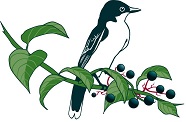Maybe you’ve noticed your neighbors’ properties covered in dirt at the end of the summer. For a week it looks a mess, but by the beginning of the next week that dirt disappears and their lawn is looking much fresher and brighter than yours. Even the texture appears softer and more even. What could have been in all that dirt to improve their lawn so much???
It’s actually a process that landscapers use at the end of the summer to improve turf for the following year. It’s called aerating and seeding, and it sometimes incorporates topdressing the lawn with compost also. And it’s not just a temporary burst of green either; this process actually improves the growing conditions for turf grasses. It is safe to do around children and pets, uses only natural materials, and according to NOFA’s Organic Land Care standards, it is a completely organic approach to lawn care.
AERATING
Aeration is the process of removing plugs of soil from lawn to help reduce compaction and improve water and air movement through the soil. In return, grass can grow deeper roots and healthier leaves. The soil that is removed as plugs lies on top of the lawn, and as it breaks down from the elements, it settles back into the holes as looser soil.
SEEDING
Seeding over the aerated lawn helps build a healthy, dense stand of turf that can stand up to weed pressure. Lawn weeds are opportunistic and if there isn’t open space for them to grow in, the seeds will just lie dormant. Dense turf also shades the soil so it stays moist longer (this is enhanced by mowing high too, ~3 inches). Seed mixes are selected based on sun and shade conditions corresponding to the site. We like to use mixes that include at least a small percentage of perennial rye, a type of grass that will germinate quickly. The result of over-seeding is a lush green lawn with minimal weeds.
TOPDRESSING
Topdressing the soil with a quarter inch of high-quality compost is strongly recommended on properties where soil has been heavily compacted or on properties that lack organic matter. Compost improves the texture of soil and its ability to hold air and water. Although this is not a necessary step to aerating and seeding, it greatly improves the results of the aerating and seeding process.
Late summer is the best time to aerate and seed because there is plenty of time for seedlings to establish and cooling temperatures encourage grass root growth. GreenWeaver schedules aerating and seeding starting in mid-August and extending through mid-September. If you’ve missed that window, a good over-seeding in the spring will help keep weeds down for the season without the need for synthetic pesticides. These few simple steps can help give you that greener, healthier lawn you’ve dreamed of… organically!


